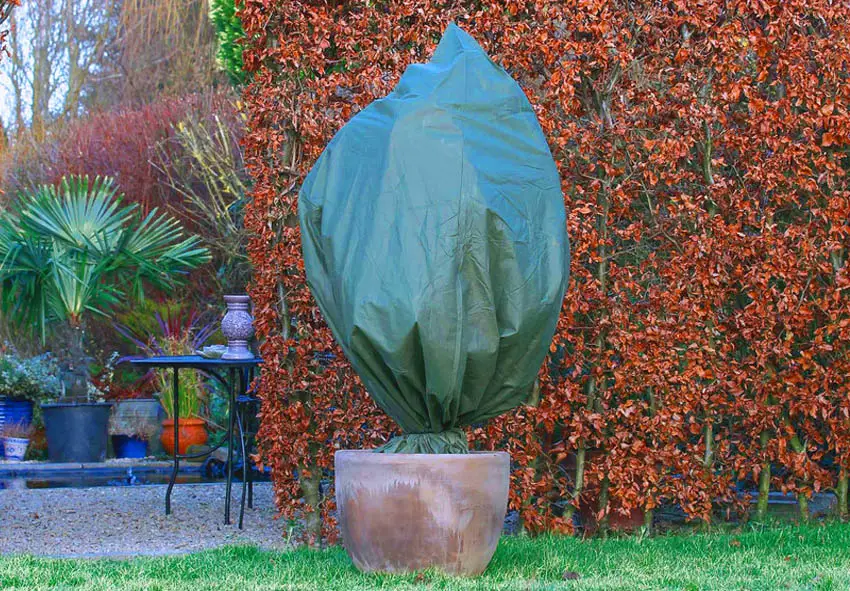
End of October – beginning of October – take care of the shelter of ornamental shrubs. And what kind of shrubs need to be covered for the winter, we will tell you.
- Kerria Japanese. It is very important that in the place where the kerria will grow, there are no drafts and strong winds. Very often, in winter, tender branches are damaged by winds and sunburn. If you have it growing in an unprotected place, then it needs shelter for the winter. At the end of November, if possible, bend the branches (after tying them into a bundle) to the ground and cover with spruce branches and agrofibre. Try to keep the winter dry. Kerria is a fairly winter-hardy plant, even if the branches freeze, the plant quickly recovers, new shoots grow.
- Spiraea. All types of spirea have high frost resistance.
- Weigela. In the first year after planting, young seedlings need shelter (agrofibre, spruce branches, leaves). In subsequent years, the bushes can not be covered. Even if the branches freeze in the winter, the bush will quickly recover in the spring.
- Forsythia. Forsythia shrub in frosty winters can freeze slightly. To prevent this from happening, bend the shoots to the ground in the fall and cover them with spruce branches or other covering material. Such a light shelter will be enough, and if more snow falls, the branches will winter well. Do not cover the branches with foil, as you can harm the flower buds (they will fade and not bloom).
- Roses. The most persistent roses that do not require shelter even in the most frosty winters are old garden and species roses. Do you know why? Yes, because most varieties bloom only once per season, after which the growth of their shoots stops, and by the onset of frost they are completely woody. And well-ripened, lignified shoots are not afraid of frost. As for modern, varietal, garden roses, they are considered sissies. They all need shelter, even the hardiest varieties. When, how and what to cover, read in our previous articles.
- Mock orange or garden jasmine hardy plant. But keep in mind that the more beautiful the variety, the less frost-resistant it is. Some varieties, especially terry ones, freeze already at a temperature of -15 ° C. Therefore, when choosing varieties for your garden, choose those that are suitable for your region.
- Barberry — does not need shelter for the winter.
- Syrian hibiscus – young plants for the winter need to be covered with spruce branches, leaves and agrofibre. The plant withstands frost – 29 ° C.
- Lilac – the plant is frost-resistant, does not need shelter.
- Buddleya or autumn lilac – for the winter, the bushes need to be cut, leaving about 10 cm above the soil surface. After that, cover the bushes with dry foliage or peat, on top with a film in which to make vents. You can simply mulch the plantings with peat, but in frosty winters the plant can freeze. As soon as it gets warmer, in the spring, remove the shelter. The plant grows quickly, and gives good shoots that can withstand frosts down to -8 ° C.
- Hydrangea – In regions with cold winters, hydrangea bushes (especially large-leaved hydrangeas) need shelter. Wrap the bushes with agrofibre, spruce branches or other covering material. Such bushes retain all flower buds, and bloom much earlier.
- Action — winters well without shelter in warm regions. In regions with severe winters, it needs shelter, as the shoots can freeze over. Wrap the bushes with agrofibre, spruce branches or other covering material.
- Campsis or thecoma — kampsis withstands short-term frosts down to -20 ° C. But if frosts last for a long time in your region, then be sure to cover the bushes for the winter. To do this, before frost, you need to remove the shoots of the kampsis from the supports, and tilt them to the ground. Lay a thick layer of spruce branches on top, agrofiber or film on top of it.
- Maiden grapes – the plant is frost-resistant, does not need shelter for the winter.
- Clematis – remove from the supports, shorten the shoots and roll up into a ring or, in a straightened state, lay on the ground varieties of clematis that bloom on last year’s shoots (clematis of the Lanuginosa group, Patens, Florida). Mulch the remaining varieties of clematis with a thick layer of mulching material in the root zone.
- Wisteria – a very thermophilic plant. She is from the subtropics. Therefore, wisteria needs warm summers (with temperatures not lower than + 20 ° C) and cold winters (with temperatures not lower than – 29 ° C). Wisteria floribunda or Japanese wisteria is a fairly frost-resistant plant, but it needs to be covered for the winter. All branches are carefully removed from the support, they are tied up and placed on the ground on a spruce branch. From above, the plant is also covered with spruce branches.
- Passiflora — in autumn, in late September – early October, dig a bush with a large clod of earth (if it did not grow in a pot) and transplant it into a container that you bring into the room. Keep it in a bright and cool room, with a temperature in the range of 12-15°C. Higher temperatures encourage yellowing and leaf drop. In the open field, only blue passionflower can winter, its roots withstand frost, and in early spring they already form many shoots. After the first autumn frosts, cover the blue passionflower with a covering material, dry leaf or agrofibre.
- actinidia — withstands temperatures of -34 ° C frost, does not need shelter.
See also How to prepare perennials for winter?
Published: 25.10.2014
Do I need to cover ornamental shrubs and vines for the winter? – planting, care, photos, how to grow and harvest
